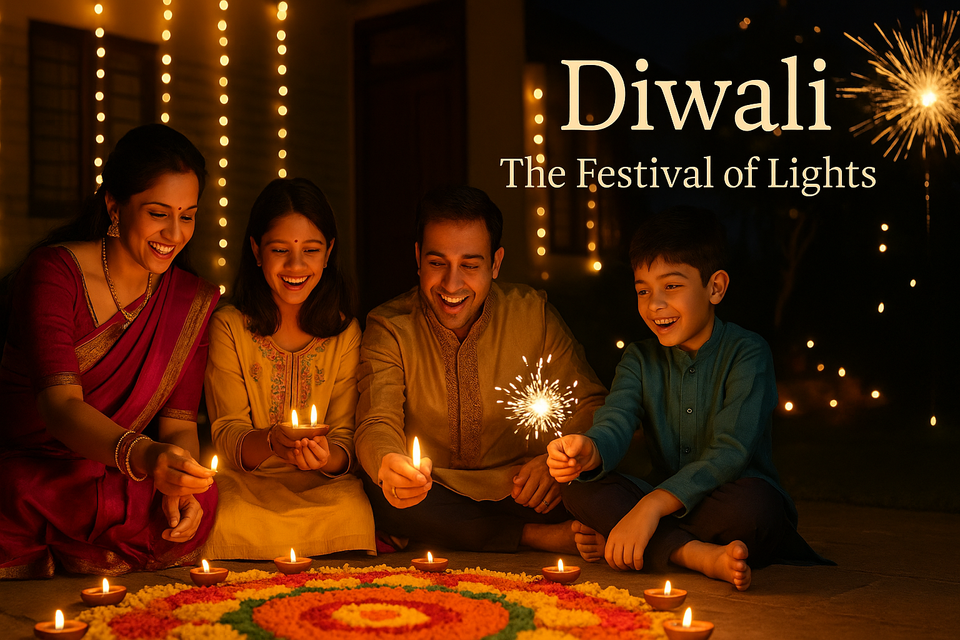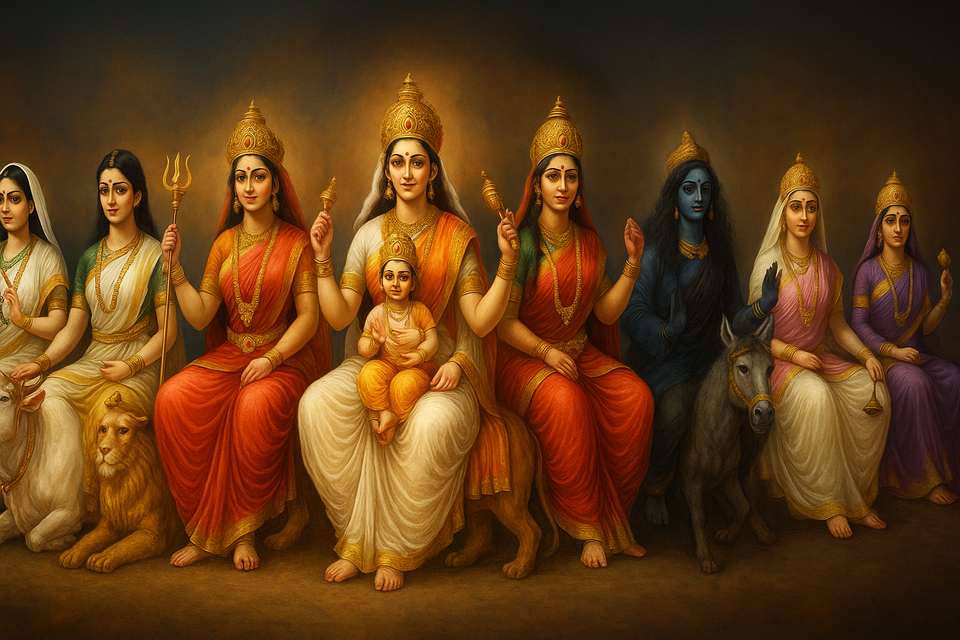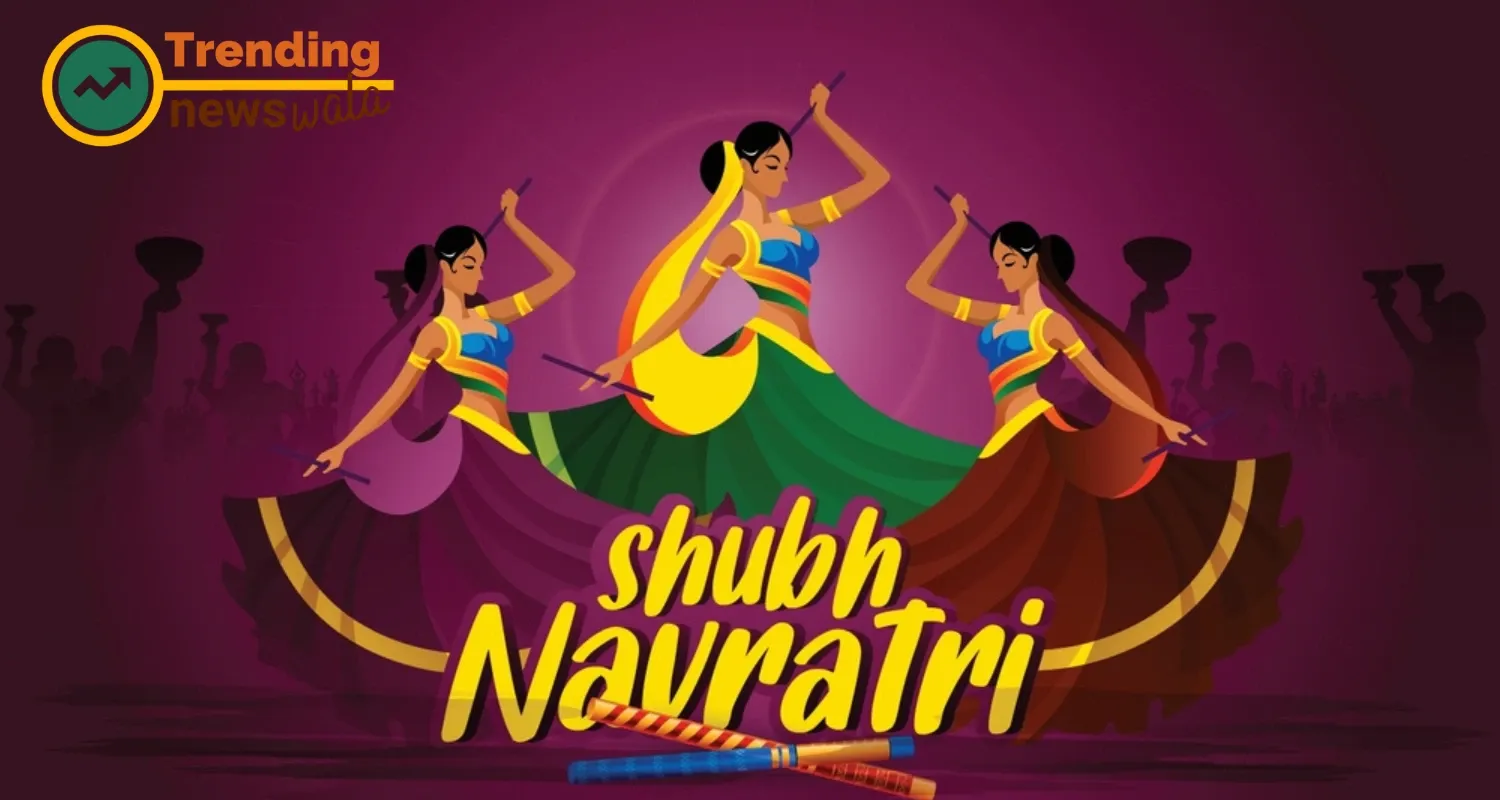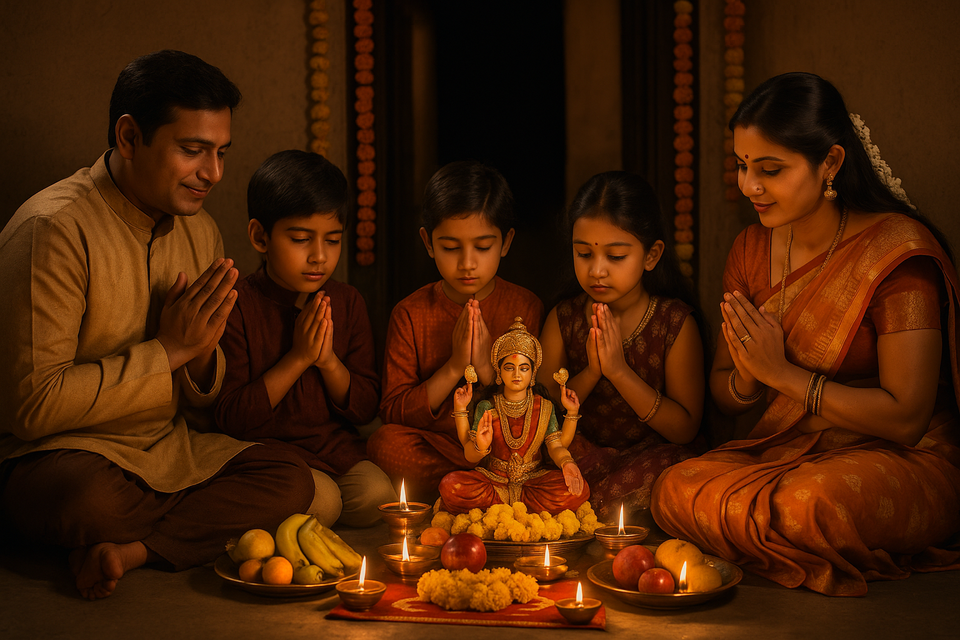Krishna Janmashtami: Celebrating the Divine Birth of Lord Krishna 🌟
Celebrate Krishna Janmashtami, honoring Lord Krishna’s divine birth! Learn its history, rituals, and modern relevance. Join vibrant festivities in India, from Dahi Handi to midnight pujas, and embrace devotion and joy. 🎉
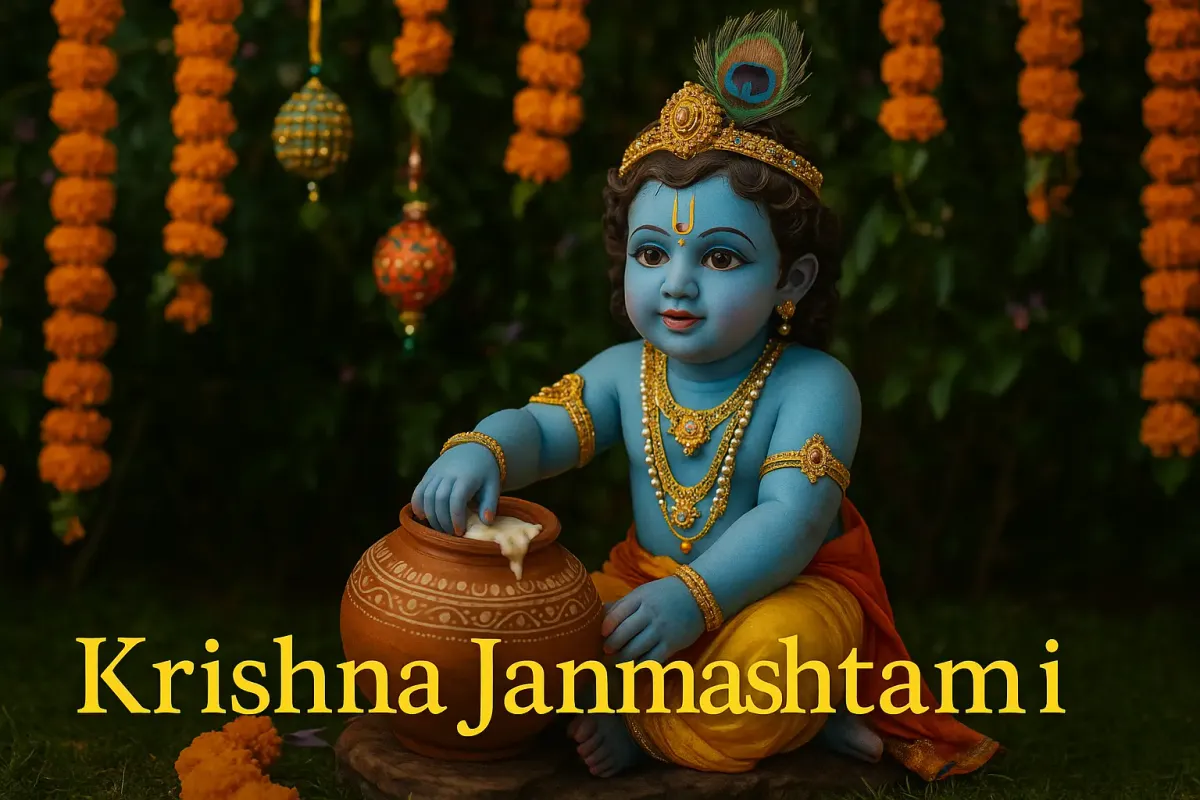
Krishna Janmashtami, one of the most cherished Hindu festivals, celebrates the birth of Lord Krishna, the eighth avatar of Lord Vishnu. Observed on the eighth day (Ashtami) of the dark fortnight (Krishna Paksha) in the Bhadrapada month, typically in August or September, Krishna Janmashtami is a vibrant festival filled with devotion, fasting, prayers, and joyous celebrations. Known for its iconic Dahi Handi events and midnight pujas marking Krishna’s birth, Krishna Janmashtami captivates millions across India and the world with its spiritual and cultural fervor.
For a deeper understanding of India’s rich festival traditions, explore Ancient Festivals of India.
Historical Background of Krishna Janmashtami 📜
The origins of Krishna Janmashtami are rooted in ancient Indian scriptures, particularly the Bhagavata Purana and Mahabharata, which narrate the life and divine deeds of Lord Krishna. Born over 5,000 years ago in Mathura to Devaki and Vasudeva, Krishna’s birth is believed to have occurred under miraculous circumstances, as described in Hindu mythology. His tyrannical uncle, King Kansa, sought to kill him at birth due to a prophecy foretelling his demise at Krishna’s hands, leading to Krishna’s secret transfer to Gokul, where he was raised by Yashoda and Nanda.
Historical evidence of Krishna Janmashtami celebrations dates back to the Gupta period (4th–6th centuries CE), with inscriptions and temple art depicting Krishna’s worship. The festival gained prominence during the Bhakti movement (8th–16th centuries), led by saints like Chaitanya Mahaprabhu, who popularized Krishna devotion through kirtans and dramas. Texts like the Gita Govinda by Jayadeva further enriched Krishna Janmashtami’s cultural legacy.
Today, Krishna Janmashtami is a major festival in India, especially in Uttar Pradesh, Gujarat, Maharashtra, and West Bengal, and among Hindu communities worldwide. Its historical significance underscores Krishna’s role as a divine guide and cultural icon. 🕉️
Mythological and Spiritual Significance of Krishna Janmashtami ✨
Krishna Janmashtami holds profound spiritual and mythological importance, embodying themes of divine love, righteousness, and liberation. Here are key aspects of its significance:
- Birth of Lord Krishna: Krishna Janmashtami celebrates Krishna’s divine birth, symbolizing the descent of God to restore dharma (righteousness) and protect devotees from evil, as prophesied in the Bhagavad Gita.
- Victory Over Evil: Krishna’s triumph over Kansa represents the victory of good over evil, a central theme of Krishna Janmashtami, inspiring devotees to overcome inner and outer challenges.
- Bhakti and Devotion: Krishna’s teachings in the Bhagavad Gita emphasize selfless devotion (bhakti) and surrender to God, making Krishna Janmashtami a time to deepen spiritual connection.
- Raas Leela and Divine Love: Krishna’s playful Raas Leela with the Gopis symbolizes divine love and the soul’s yearning for God, celebrated through dances and dramas during Krishna Janmashtami.
- Universal Appeal: Krishna’s multifaceted persona—child, lover, warrior, and philosopher—makes Krishna Janmashtami a festival that resonates with diverse devotees seeking wisdom and joy.
The spiritual essence of Krishna Janmashtami lies in its celebration of Krishna’s divine leelas (playful acts) and teachings, guiding devotees toward a life of love and righteousness. 🌼
For insights into India’s sacred sites, visit Shiva Temples In India.
Cultural Importance of Krishna Janmashtami 🎭
Krishna Janmashtami is a cultural milestone that showcases India’s rich heritage of devotion, art, and community spirit. Its cultural significance includes:
- Artistic Expression: Krishna Janmashtami inspires traditional arts like Rasleela dramas, Bhagavata Mela performances, and devotional music (bhajans), reflecting India’s cultural vibrancy.
- Culinary Traditions: Special dishes like makhan (butter), panjiri, and peda are prepared during Krishna Janmashtami, celebrating Krishna’s love for dairy and uniting families through feasts.
- Community Bonding: The festival brings people together through pujas, Dahi Handi events, and temple gatherings, fostering social harmony during Krishna Janmashtami.
- Economic Impact: Krishna Janmashtami drives demand for puja items, sweets, and traditional attire, supporting local artisans and businesses across India.
- Global Reach: Hindu diaspora communities in the USA, UK, Canada, and Australia celebrate Krishna Janmashtami with temple events and cultural programs, promoting Indian culture worldwide.
The cultural vibrancy of Krishna Janmashtami lies in its blend of spirituality and festivity, making it a cherished celebration for devotees and enthusiasts alike. 🌈
Rituals and Traditions of Krishna Janmashtami 🛕
Krishna Janmashtami is marked by a series of rituals that blend devotion, joy, and community participation. These traditions create a sacred and festive atmosphere, uniting devotees in reverence for Krishna. Here’s a detailed look at the key rituals of Krishna Janmashtami:
1. Fasting and Devotion 🙏
Devotees observe a fast, either nirjala (without water) or phalahar (fruits and milk), on Krishna Janmashtami, abstaining from food until midnight, the time of Krishna’s birth. Fasting symbolizes purification and dedication to Lord Krishna.
2. Midnight Puja 🌙
The highlight of Krishna Janmashtami is the midnight puja, commemorating Krishna’s birth at 12 AM. Devotees set up a cradle with a baby Krishna idol, adorned with flowers, jewelry, and clothes. Offerings include:
- Sweets: Makhan, kheer, or laddu.
- Fruits: Bananas or pomegranates.
- Flowers: Tulsi or jasmine.
Mantras like Krishna Ashtakam or Hare Krishna Mahamantra are chanted, and the cradle is rocked to celebrate Krishna’s arrival.
3. Jhulan Seva (Swing Decoration) 🎠
Temples and homes decorate swings (jhulas) with flowers and fabrics, placing Krishna’s idol in them to symbolize his playful childhood. Devotees gently swing the idol during Krishna Janmashtami, singing bhajans in devotion.
4. Dahi Handi 🧈
In Maharashtra and Gujarat, Krishna Janmashtami is famous for Dahi Handi, where teams of young men (Govindas) form human pyramids to break a pot of curd or butter hung high, reenacting Krishna’s mischievous butter-stealing antics. This lively event draws crowds and fosters teamwork.
5. Rasleela and Dramas 🎭
Rasleela performances, depicting Krishna’s divine dance with the Gopis, and dramas narrating his life are organized during Krishna Janmashtami. These cultural events, especially in Mathura and Vrindavan, captivate audiences with their devotion and artistry.
6. Bhajans and Kirtans 🎶
Devotees sing devotional songs (bhajans) and perform kirtans in praise of Krishna throughout Krishna Janmashtami. Popular chants include Hare Rama, Hare Krishna and Govind Bolo Hari Gopal Bolo, creating a spiritual ambiance.
7. Home and Temple Decoration 🪔
Homes and temples are cleaned and adorned with rangoli, diyas, and flowers during Krishna Janmashtami. Footprints of baby Krishna, drawn with rice flour, symbolize his entry into homes, adding a festive touch.
8. Charity and Feasting 🤝
After breaking the fast at midnight, devotees share prasad and feast on Krishna’s favorite foods like makhan mishri and panjiri. Charity, such as donating food or clothes, is practiced to honor Krishna’s compassion during Krishna Janmashtami.
These rituals make Krishna Janmashtami a vibrant celebration of devotion, joy, and cultural heritage. 🎊
Celebrations Across India and Beyond 🌍
Krishna Janmashtami is celebrated with immense enthusiasm across India, particularly in Uttar Pradesh, Gujarat, Maharashtra, and West Bengal, and among Hindu communities worldwide. Here’s how different regions mark the festival:
- Uttar Pradesh: Mathura and Vrindavan, Krishna’s birthplace and childhood home, are epicenters of Krishna Janmashtami. Temples like Shri Krishna Janmabhoomi and ISKCON host grand pujas, Rasleela, and midnight celebrations, drawing millions.
- Gujarat: Dwarka and Ahmedabad celebrate Krishna Janmashtami with Dahi Handi competitions and temple visits. The Jagannath Temple in Ahmedabad hosts vibrant processions.
- Maharashtra: Mumbai and Pune are famous for Dahi Handi events during Krishna Janmashtami, with professional teams competing for prizes. Temples like ISKCON Juhu attract large crowds.
- West Bengal: Kolkata’s ISKCON temple organizes kirtans and dramas, blending Bengali culture with Krishna devotion during Krishna Janmashtami.
- Global Celebrations: Hindu diaspora in the USA (e.g., New Jersey’s ISKCON temples), UK (Bhaktivedanta Manor), Canada, and Australia celebrate Krishna Janmashtami with pujas, cultural programs, and virtual events, keeping traditions alive.
The festival’s universal appeal fosters cultural and spiritual harmony, uniting devotees worldwide during Krishna Janmashtami. 🌏
Modern Relevance of Krishna Janmashtami 🌐
In today’s fast-paced world, Krishna Janmashtami remains a beacon of devotion, wisdom, and joy, adapting to modern sensibilities. Its contemporary significance includes:
- Spiritual Guidance: Krishna’s Bhagavad Gita teachings offer solutions to modern challenges like stress and ethical dilemmas, making Krishna Janmashtami a time for reflection and growth.
- Cultural Preservation: The festival keeps traditional arts like Rasleela, bhajans, and rangoli alive, with younger generations sharing celebrations on social media during Krishna Janmashtami.
- Community Engagement: Dahi Handi and temple events foster teamwork and social bonding, aligning with modern community-building efforts during Krishna Janmashtami.
- Economic Boost: The festival drives sales of puja items, sweets, and traditional attire, supporting India’s retail sector and artisans during Krishna Janmashtami.
- Digital Reach: Live-streamed pujas, virtual kirtans, and social media campaigns amplify Krishna Janmashtami’s global reach, connecting devotees across borders.
Organizations like ISKCON and Bollywood’s portrayal of Krishna in films enhance Krishna Janmashtami’s modern appeal, ensuring its relevance as of June 5, 2025. 📱
How to Celebrate Krishna Janmashtami at Home 🏠
Planning to celebrate Krishna Janmashtami? Here’s a step-by-step guide for a meaningful celebration:
- Clean and Decorate: Clean your home and create a puja space with rangoli, diyas, and Krishna’s footprints drawn with rice flour to welcome him during Krishna Janmashtami.
- Set Up a Cradle: Place a baby Krishna idol in a decorated cradle (palna), adorned with flowers and clothes, for the midnight puja.
- Observe a Fast: Follow a nirjala or phalahar fast until midnight, consuming only fruits, milk, or water, to honor Krishna during Krishna Janmashtami.
- Perform Midnight Puja: At 12 AM, offer prayers with mantras, sweets, and tulsi leaves. Rock the cradle and sing bhajans like Nand Ke Anand Bhayo.
- Decorate a Jhula: Create a small swing for Krishna’s idol, gently swinging it while singing devotional songs during Krishna Janmashtami.
- Prepare Prasad: Cook Krishna’s favorite foods like makhan, kheer, or panjiri and share as prasad after the puja.
- Sing Bhajans: Play or sing Krishna bhajans, such as Hare Krishna Mahamantra, to create a devotional atmosphere for Krishna Janmashtami.
- Engage in Charity: Donate food, clothes, or funds to the needy, reflecting Krishna’s compassion during Krishna Janmashtami.
- Share Greetings: Send Krishna Janmashtami wishes via WhatsApp, Instagram, or cards, with messages like “May Krishna’s blessings bring joy and peace!”
These steps ensure a heartfelt and authentic Krishna Janmashtami celebration at home. 🎈
Practical Information for Visitors 🌍
Planning to experience Krishna Janmashtami in India? Here’s what you need to know as of June 5, 2025:
- Best Places to Visit: Mathura (Shri Krishna Janmabhoomi), Vrindavan (ISKCON Temple), Mumbai (Dahi Handi events), or Dwarka (Dwarkadhish Temple) for vibrant Krishna Janmashtami celebrations.
- Timing: Krishna Janmashtami falls on Bhadrapada Krishna Ashtami (e.g., August 16, 2025). Check the Hindu calendar for exact dates.
- How to Reach:
- By Air: Delhi (Indira Gandhi International Airport for Mathura/Vrindavan), Mumbai (Chhatrapati Shivaji Airport), or Ahmedabad (for Dwarka) are well-connected.
- By Train: Mathura Junction, Mumbai Central, and Dwarka Railway Station are major hubs.
- By Road: Highways connect these cities with buses and taxis.
- Accommodation: Book hotels or guesthouses in advance, especially in Mathura and Vrindavan, due to high demand. Options range from budget stays to luxury hotels like Radisson Mathura.
- Etiquette: Dress modestly, remove footwear at temples, and respect fasting and puja rituals during Krishna Janmashtami events.
Visiting during Krishna Janmashtami offers a unique glimpse into India’s spiritual and cultural vibrancy. 🛫
Conclusion 🌄
Krishna Janmashtami is a radiant celebration of Lord Krishna’s divine birth, uniting devotees in devotion, joy, and cultural pride. From fasting and midnight pujas to Dahi Handi and Rasleela, Krishna Janmashtami offers a rich tapestry of rituals that inspire spiritual growth and community bonding. Its historical, spiritual, and modern significance makes it a cherished festival that resonates with millions worldwide. Whether you’re a devotee seeking Krishna’s blessings or a visitor eager to explore India’s festive heritage, Krishna Janmashtami promises an unforgettable experience. Embrace the divine leelas of Krishna and celebrate Krishna Janmashtami with love and reverence! 🪔

